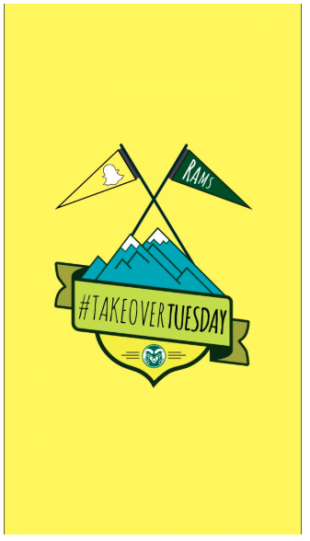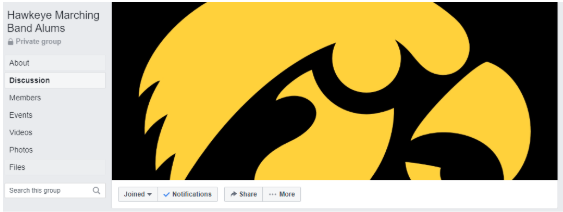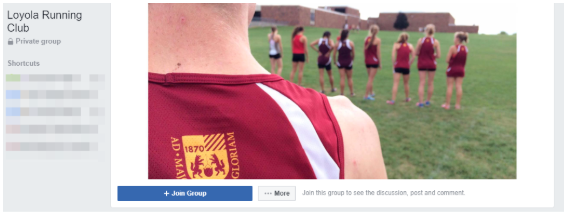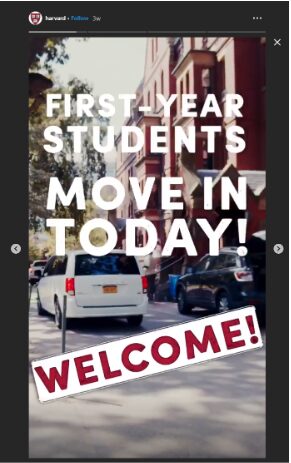Social media in higher education provides an indispensable resource to students and alumni — not to mention the school itself.
But it’s not enough to just tweet out events happening at your school. You need to engage your audience. Doing so encourages more people to follow you, and increases your brand awareness.
And yes, I mean brand awareness. Remember: Your school — like a business — is a brand. How people perceive your brand depends a lot on the content you put out into the world.
Social media in higher education is a perfect avenue for that.
As Gen Z and their parents start making decisions on which schools to attend, they’re turning to social media to help them decide (more on this later).
This means one thing: Establishing a presence on a social media for higher education institutions is more important than ever.
Whether your school is just getting started with social media, or you’re looking for actionable ways to expand your following, these tips will help you get the most of your social presence.
Bonus: We surveyed 530 of your peers to learn how social media strategies have changed in higher education over the past two years. Watch the webinar to find out the top 3 trends now.
Watch now
Advantages of social media in higher education
Social media isn’t all memes and arguing politics. It gives you a great opportunity to engage and interact with students and alumni.
Check out the four benefits of using social media in higher education below.
Student recruitment
More and more students turn to social media in order to inform their school choice for college and university.
Platforms like Instagram give prospective students the opportunity to see what life is like at different schools—from the residence halls, to classes, to celebrations, and outdoor strolling spaces.
One great example of this kind of behind-the-scenes content comes from Harvard. With 1.3 million followers, the Ivy League school currently has one of the most popular Instagram account of any university—and for good reason.
They do a great job of giving their followers a deep look into what life is like as a student with their Instagram Stories. For example, here’s a story showcasing what move-in day looks like.
Another great example comes from Australia’s University of New South Wales. They recognized the opportunity they had to use social media as a recruitment tool during their annual recruitment event called “O-Week.”
The university used O-Week to promote their school’s culture, classes, and clubs on social media.
Day 1 of #unswoweek is off to a lovely sunny start. Here are some hot tips on how to have a great week: https://t.co/5SMFXXWZjl pic.twitter.com/dUxma4hyAQ
— UNSW (@UNSW) February 20, 2017
They also invited potential students to come to fun events showcasing the fun side of UNSW.
Free #unswoweek Night Markets film screening tonight @ 7pm. Come for the food, stay for the classic cyborg romance @GhostInShell pic.twitter.com/biBelSXpdV
— UNSW (@UNSW) February 22, 2017
Alumni and student engagement
Social media offers a perfect platform to keep students and alumni engaged with the school—even after they’ve graduated.
This establishes your school as more than just a school. It’s also a community where people develop deep, life-long connections with one another.
One great example of this is comes from Colorado State University. A while back, they let a few select students helm their Snapchat for “Takeover Tuesday.”

This activity allowed followers to get a glimpse into the lives of the actual students attending the school.
It also gave CSU a chance to engage with their followers (students) directly by literally handing the reigns over to some of their followers. Friends and family of the students taking over the account tuned in to watch their day.
By giving the students a platform to show off their lives, they encouraged engagement with the Snapchat account.
Social media is also great for engaging with alumni—whether it’s to keep them informed of the latest university news, or to help boost fundraising for the school.
Purdue University used social media for fundraising to great success. During their 2016 “Day of Giving” campaign, they issued fundraising challenges to followers while pushing out the hashtag #PurdueDayOfGiving across all their social platforms.
The results were extraordinary. Not only did they raise a record $18.3 million but they also saw huge improvements in their social reach.
“Social media impressions tied to Purdue Day of Giving, including exposures on Facebook, Twitter, and Instagram through posts and social sharing, rose to 24 million from last year’s 19.5 million,” the school wrote in a statement.
Effective school promotion
Remember: Your school is a brand. Like any brand, you want to show off your best angles. Social media provides a great way to showcase everything wonderful about your school.
Have some great news you want to share? Tweet it out like Stanford did here.
.@StanfordHealth acquired Sol LeWitt’s Wall Drawing #911 essentially as a design + mathematical adjustments. Two Stanford interns, one team of master painters and 75 rolls of masking tape later, it has come to life in the #NewStanfordHospital. https://t.co/YWYVP5LzKD
— Stanford University (@Stanford) September 13, 2019
Maybe you just want to show off your pretty campus? Instagram is a perfect place for that.
Another thing you should promote is your school’s research capabilities. Research schools need to attract great minds in order to innovate and stay on the forefront. Social media is a great place to do just that.
#UIowaResearch aims to provide a possible treatment for the most deadly pediatric brain cancer. https://t.co/r1BWSlO7r6 pic.twitter.com/cmbB5oSsMf
— University of Iowa (@uiowa) September 23, 2019
Innovation Snapshot: #UBC spinoff company recovers polluting nutrients from wastewater, turning them into fertilizer https://t.co/OK0vf9QJgz pic.twitter.com/100iC9dDqf
— University of British Columbia (@UBC) February 21, 2017
Crisis communication
You never want anything bad to happen at your school, but sometimes there’s no avoiding an emergency.
When that happens, most schools have an established crisis communication system in place to help keep students, parents, faculty, and staff informed.
For example, when a violent attack occurred on the campus of Ohio State University (OSU) in November 2016, the school’s emergency broadcast Twitter account sent out a “shelter-in-place” alert for anyone on campus to “run hide fight.”
Buckeye Alert: Active Shooter on campus. Run Hide Fight. Watts Hall. 19th and College.
— OSU Emergency Mngmnt (@OSU_EMFP) November 28, 2016
This was also retweeted by the school’s regular Twitter account, reaching even more people.
As the crisis continued, the account sent more updates informing anyone who could read the tweets on how to respond.
Buckeye Alert: Continue to shelter in place. Wait for Police officers directions. Please contact Police / 9-1-1 only if you have information
— OSU Emergency Mngmnt (@OSU_EMFP) November 28, 2016
In the days and weeks that followed the crisis, OSU officials continued to keep students informed through social media by offering updates and information on campus counseling.
To this day, the school continues to use social as a primary safety communication tool. Campus officials were later applauded for their effectiveness in keeping their staff and students safe throughout the crisis.
Public Safety Director Monica Moll already making an impact @OhioState via @DispatchAlerts READ: https://t.co/W2xsC4B0XY
— Ohio State A&P (@OhioStateAP) December 28, 2016
Using social media in higher education: 8 essential tips
Now that you know some of the advantages of using social media in higher education, let’s take a look at some best practices. These tips will help you streamline your social media efforts across every platform.
1. Develop a social media style guide
In the writing and editing world, many brands and publications have something called a style guide. This is a set of standards and guidelines for how a brand’s voice should sound across all channels, who their audience is, and how writers should approach creating copy and blog posts for them.
Social media should be no different. That’s why it’s important to develop a style guide for your social media platforms to remain consistent in brand identity across all your public facing channels.
It can help inform all content, from which branded hashtags you should use, to who you’re allowed to retweet (or who you shouldn’t retweet), to what emojis you should use.
A few great things to include in your style guide:
- Goals. What you want to accomplish with your social media platforms.
- Audience. Who your target audience is and who you’ll be engaging with.
- Voice. How you want your tone to sound on social media (e.g. funny, serious, excited)
- Grammar. The phrases and words you use in your industry, as well as how you punctuate your sentences.
It’s an extremely effective way to ensure all campus-wide social media efforts are on the same page and in line with your school’s overall branding.
If you’re unsure of how to build one, check out our article on how to create a social media style guide for your organization.
2. Develop a social media policy
Think of social media policy as a document of guidelines for your school’s social media use.
Like a style guide, it can help you with maintaining brand identity across multiple channels.
However, a social media policy goes deeper on how you should treat things like:
- Legal and compliance issues
- PR crises
- Employee conduct
- Employee roles
- Security breaches
To learn how to develop one, read our article on how to write a social media policy for your company.
3. Be a chameleon
Chameleons change color depending on their environment. Doing so gives them a bigger chance of success and survival out in the wild.
The same is true for social media. Your brand must approach each platform knowing what works and what doesn’t for that specific platform.
For example, you shouldn’t expect a post you write for Twitter to perform the same way on Facebook. That’s because people expect tweets to be short, snappy, and targeted towards a younger audience. Whereas on Facebook, the audience is older and you can write longer posts.
Being a social media chameleon doesn’t just mean changing things up according to platform either. It also means creating different accounts for different facets of your audience.
For example, the University of Clemson has many different accounts for their school. There’s the main school account:
???? This week in Clemson.
— Clemson University (@ClemsonUniv) September 18, 2019
There’s an account for their different sports team:
Most Exciting 25 Seconds… Week 4️⃣‼ #ALLIN pic.twitter.com/0KmzdI2Gkr
— Clemson Football (@ClemsonFB) September 22, 2019
Look good, play good. ???????? pic.twitter.com/cmvUL9wa1M
— Clemson Women’s Basketball (@ClemsonWBB) September 24, 2019
They even have a crisis management account—which they test regularly:
CU SAFE ALERT: This is a test message. No action is necessary. (September 13,2019)
— Clemson University Public Safety (@ClemsonSafety) September 13, 2019
And many, many more. Your school should do the same based on what your students, alumni, staff, and faculty want.
So be a chameleon—just don’t start eating bugs.
4. Stream live
One of the biggest trends in social media today is live streaming. It allows you to instantly connect with your audience by streaming a live video.
It’s perfect for things like lectures from big names, sports events, Q&As with faculty, graduation ceremonies, or any other event you think your audience will love.
While many social platforms offer their own version of live streaming, there are two we suggest using:
- Facebook Live. With more than 2.2 billion users, Facebook is the most popular social media platform out there. As such, it also is a great place to stream your live event for followers to see. Check out our article on Facebook Live tips to get started.
- Instagram Live. Instagram Live is a fantastic platform to reach younger audiences as it is the most popular social media site amongst millennials and Gen-Z by far. Check out our article on how to use Instagram Live to get started.
So don’t be shy. Think about ways you can go live with your social media accounts.
5. Engage often
Always look for ways to engage your followers. This builds trust and boosts your brand awareness in the long run.
This can come in many forms:
- Replies
- Retweets
- Likes
- Follows
- Shoutouts on posts
- Comments
One school that does this very well is Iowa State University. They frequently retweet their followers and aren’t afraid to throw some friendly shade now and again.
Your Twitter bio says you can. Don’t forget your gloves and hat. ☃️ https://t.co/rX9bkrzoPR
— Iowa State University (@IowaStateU) February 7, 2019
As Hootsuite’s social engagement specialist Nick Martin says:
“Your followers don’t want to talk to a faceless organization. They want to talk to real people on social media. Engaging one-on-one lets them know there’s a real person behind the account, and that can really make a difference in the trust they have for your brand.”
For more, read our article on how to increase social media engagement.
6. Build communities
There’s no better way to keep alumni and students engaged on social media than creating communities centered on their interests—and platforms like Facebook are perfect for that.
Does your school have a marching band? Create a marching band group and alumni page like the University of Iowa does.

Or maybe your school has a running club? Make a group for it like Loyola!

Or maybe you just want to create a page for a graduating class? Indiana University does it for every class of Hoosiers.

No matter what kind of Facebook group you choose to create, it’s a great opportunity to get students involved too. Delegate student ambassadors from any club to be the administrator of the group.
They’ll gain experience in social media management, and your school’s social media manager won’t have to be in charge of potentially hundreds of school-related Facebook groups.
Pro tip: make sure any Facebook group administrator is familiar with your school’s social media policy.
7. Create a social media content calendar
A social media content calendar is crucial for social media success. In fact, it’s arguably the most important part of your social media strategy.
That’s because a good social media calendar allows you to do several things:
- Remember important dates. If there’s a holiday or an event coming up, you’ll be able to create content for it.
- Creates consistency. Did you know one of the best ways to get Instagram followers is by posting consistently? That’s because you’ll give your followers more opportunities to like and share your content.
- Saves time. With a social media content calendar, the days of wondering what you should post and scrambling to come up with the perfect copy for a tweet are over. Instead, you can refer to your calendar and see what you planned on posting already.
- Avoids cross-promotion errors. Remember to be a social media chameleon. That means avoiding just copy and pasting the same message across your social platforms. Having a social calendar in front of you helps avoid these situations.
For more on this, check out our article on how to create a social media content calendar.
A good social media content calendar also helps you with scheduling and monitoring your posts, which brings us to…
8. Integrate social media scheduling and monitoring
Implement a social media scheduling and monitoring tool to coordinate a cross-campus social media effort.
A good tool will allow you to create an automated system to take the headache away from planning, scheduling, and curating content. It will also provide you with vital metrics that will drive your social media decisions going forward.
Not sure what you’re looking for? Check out our list of must-have features for social media software.
And for more insights into what’s possible with these sorts of tools, take a look at how the University of St. Andrew enhanced their student experience through social media.
Use Hootsuite to easily manage your school’s social channels, collect real-time data, and engage with students across multiple networks. Try it free today.
Get Started
